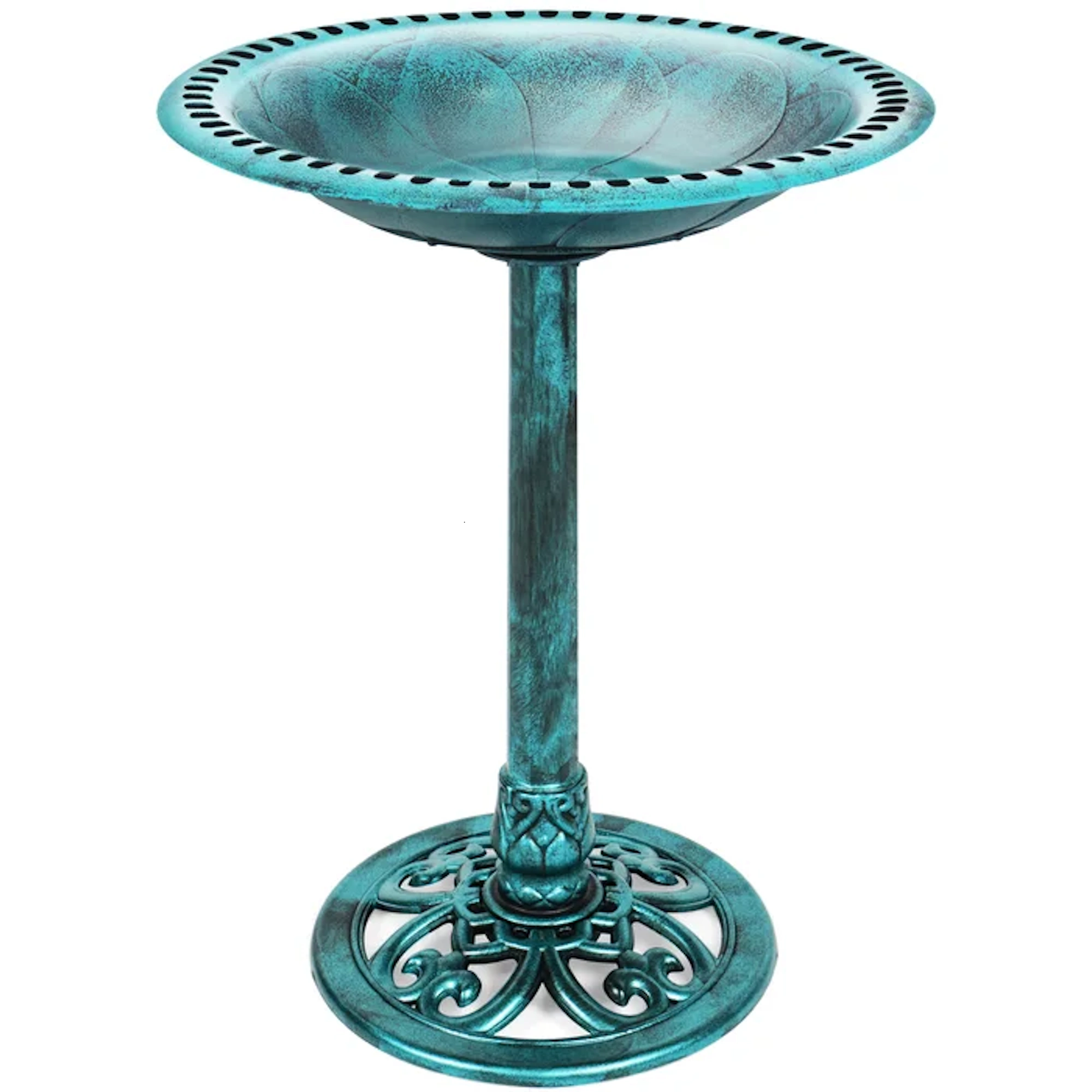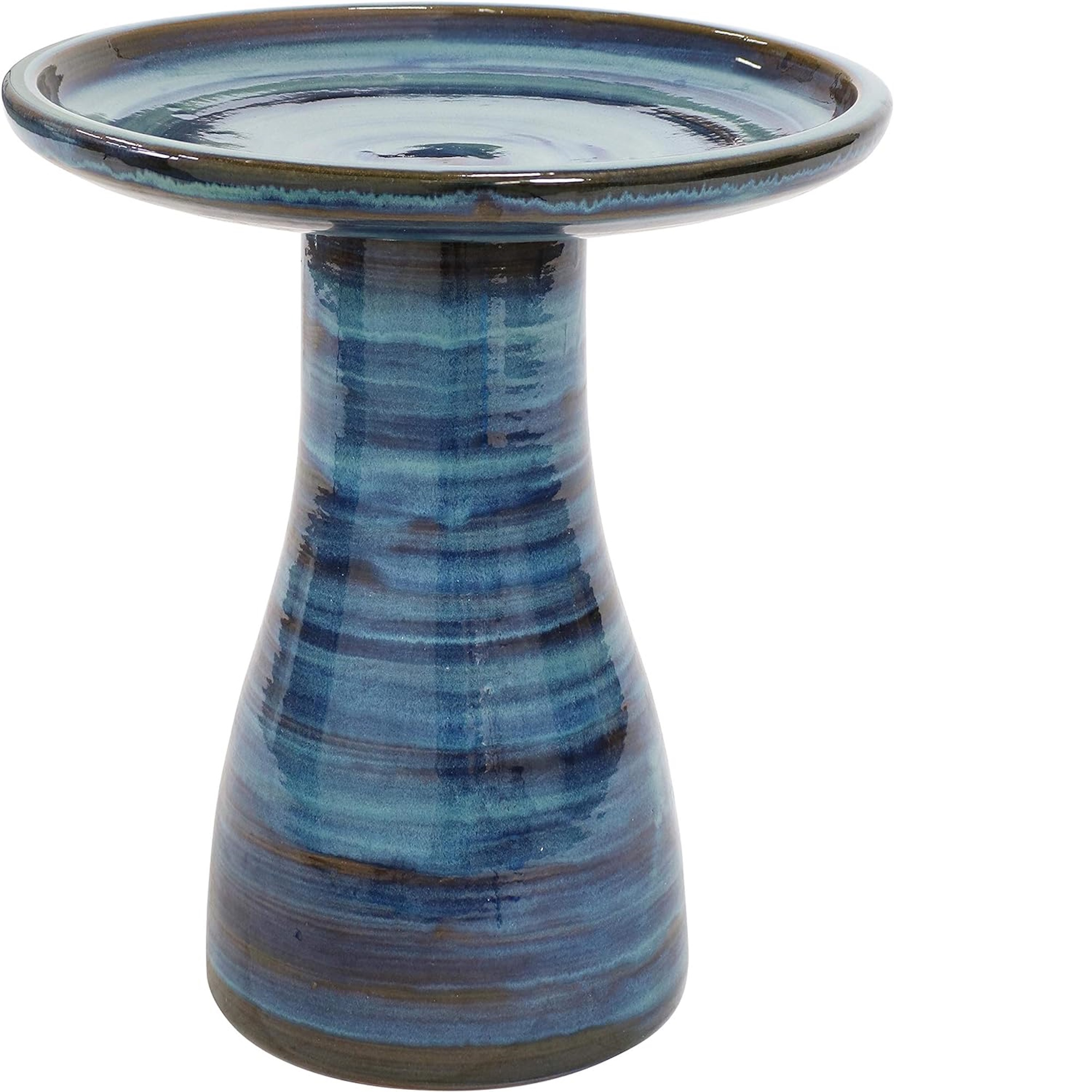Bird bath winter care – 7 ways to continue providing birds with water during colder months
Encourage birds to keep visiting your yard in winter by keeping your bird bath accessible
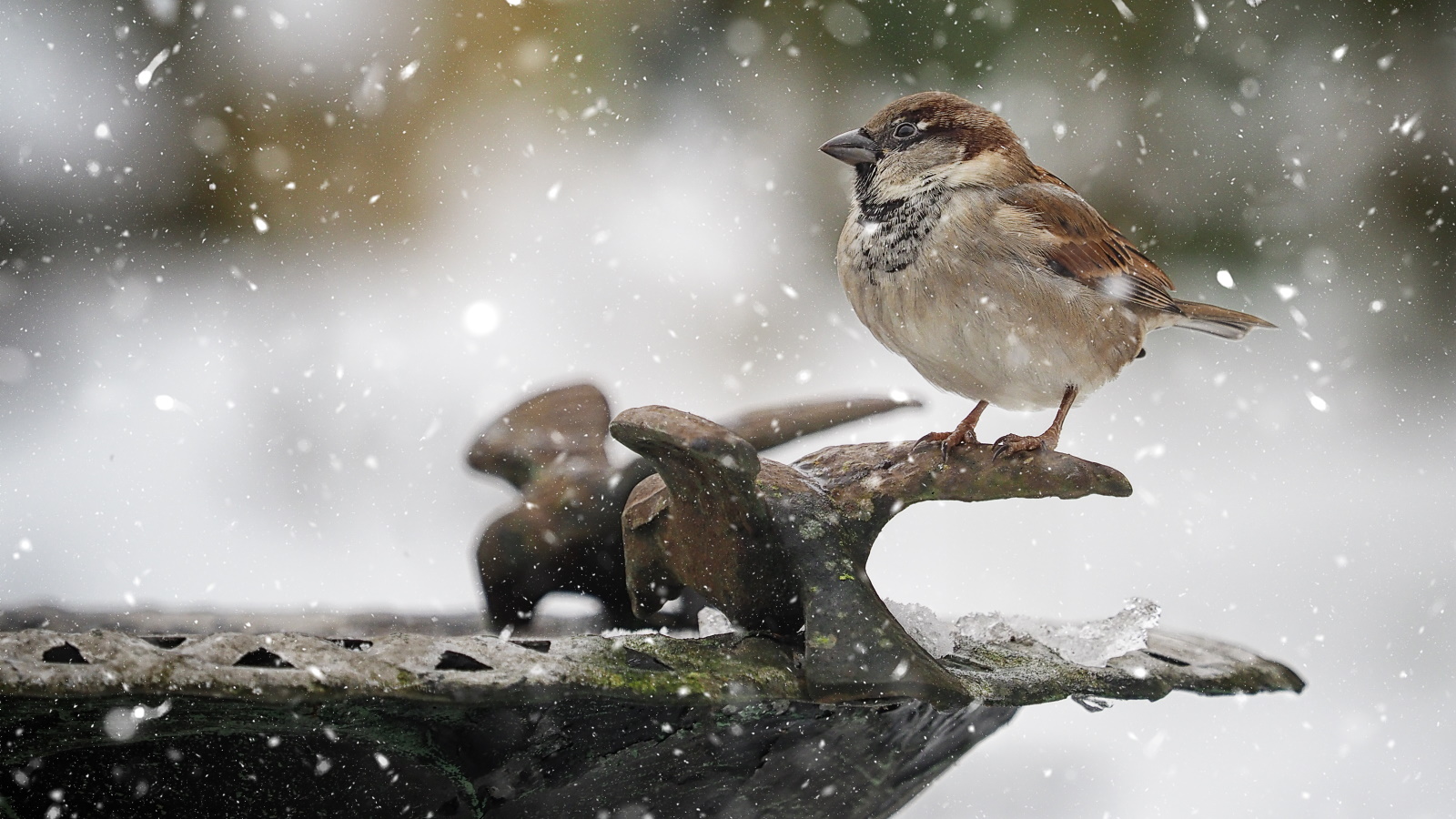

Tenielle Jordison
As the frostier weather approaches, wildlife gardeners will be turning their attention to helping the visitors in their yard get through the coldest season. The winter months can be tough on garden birds in particular - as more people stay indoors, bird feeders are left unfilled and bird baths can quickly freeze over.
In a pinch, birds will eat snow to keep up their hydration levels, but doing this requires a lot of energy and only means they need to eat more to survive. That's why learning how to maintain your bird bath during the winter season is essential in helping garden birds in winter.
Whatever bird bath idea you go for, keeping it fully accessible throughout winter means your feathered visitors can drink sufficiently, as well as preen and clean their feathers to keep them in good working order. Here are a few points of bird bath winter care for you to focus on this year:
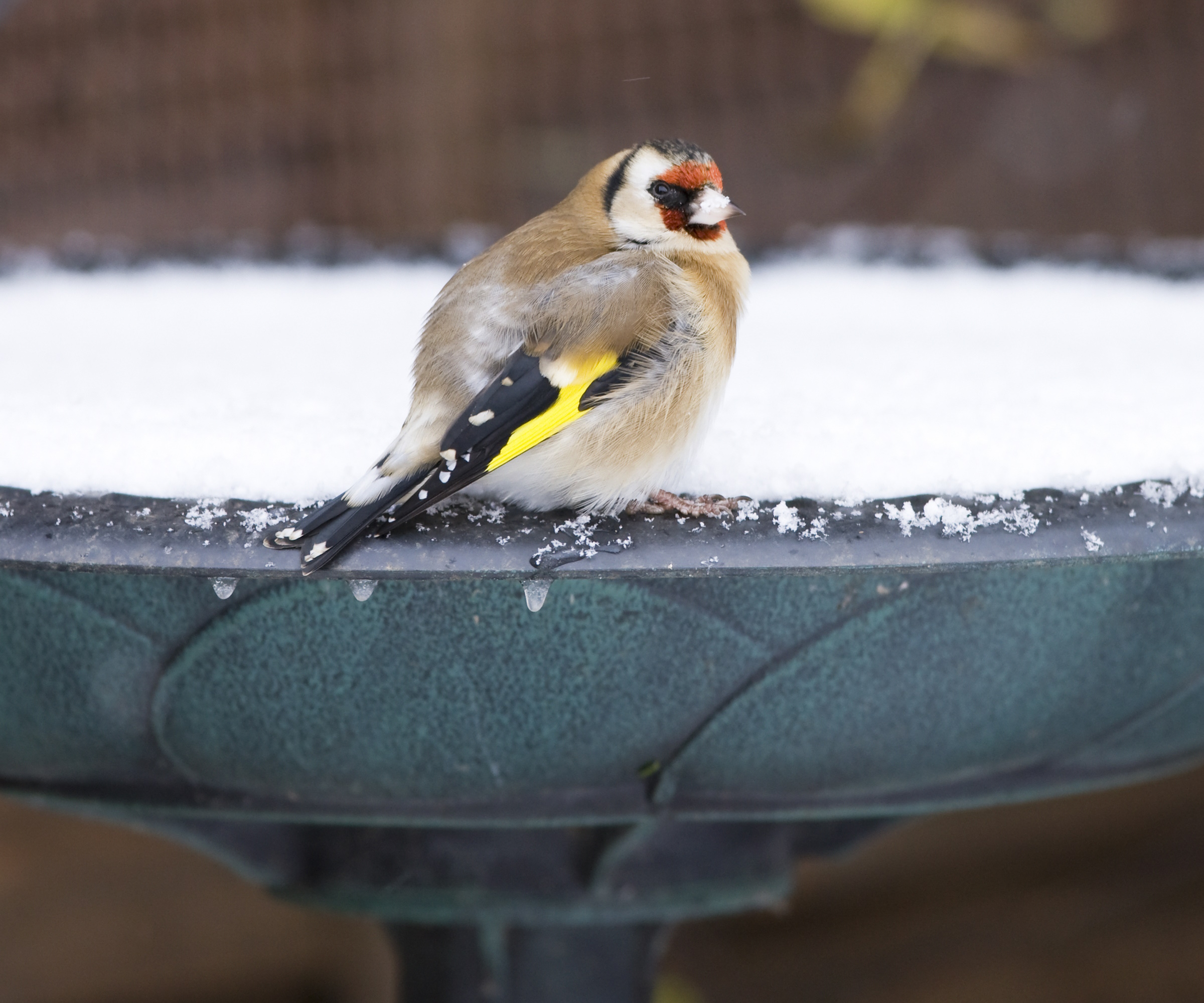
7 expert tips for bird bath winter care
While it's important to overwinter a garden to help your precious plants survive winter weather conditions, don't forget to also give some attention to the wildlife garden features in your yard. Doing the below bird bath winter care tasks will help you support garden birds during the coldest time of year.
1. Consider the material of your bird bath
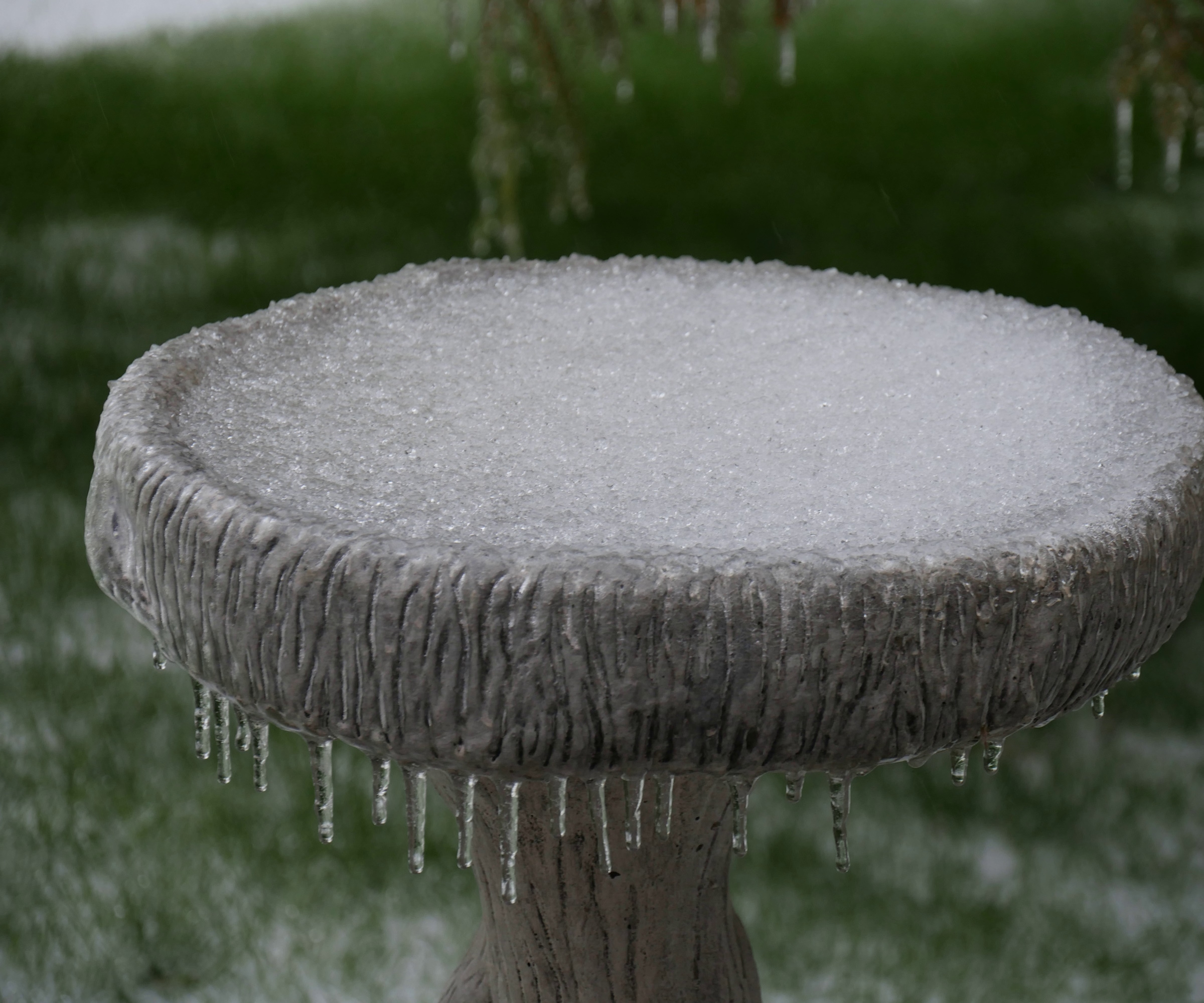
In cold areas where temperatures may drop below freezing during the winter months, it's worth knowing what material your bird bath is made from.
Katie Phillips and Krystol O'Rourke, the co-founders of Spade & Sparrow Designs, explain: 'A material that can absorb water such as stone, ceramic, or cement, is best emptied of water and covered with a plastic tarp or moved to a shed to keep it dry until winter is over.'
This is because, over time, bird baths will crack if they're made of materials that are not resistant to the expansion caused by freezing.
Comparatively, bird baths made from metals, reinforced plastics, or resins will not be damaged by freezing temperatures and can be left outdoors year-round.

Krystol O'Rourke has enjoyed a lifelong love affair with all things green and growing. After 25 years in medicine, as a physician and adjunct professor, she followed her heart by going back to school to study horticulture at North Carolina State University and exploring some of the most magnificent gardens around the world. She is co-founder of Spade & Sparrow exterior design business.

A knack for service, and a deep love of people led Katie to a two decades long career in nursing and medical management. While serving as the principal designer for her medical office upfit, she discovered the connection between an inspired workplace and a deep sense of wellbeing that pushed her to further investigate exactly what it takes to create that feeling at home.
2. Defrost or remove any ice that forms
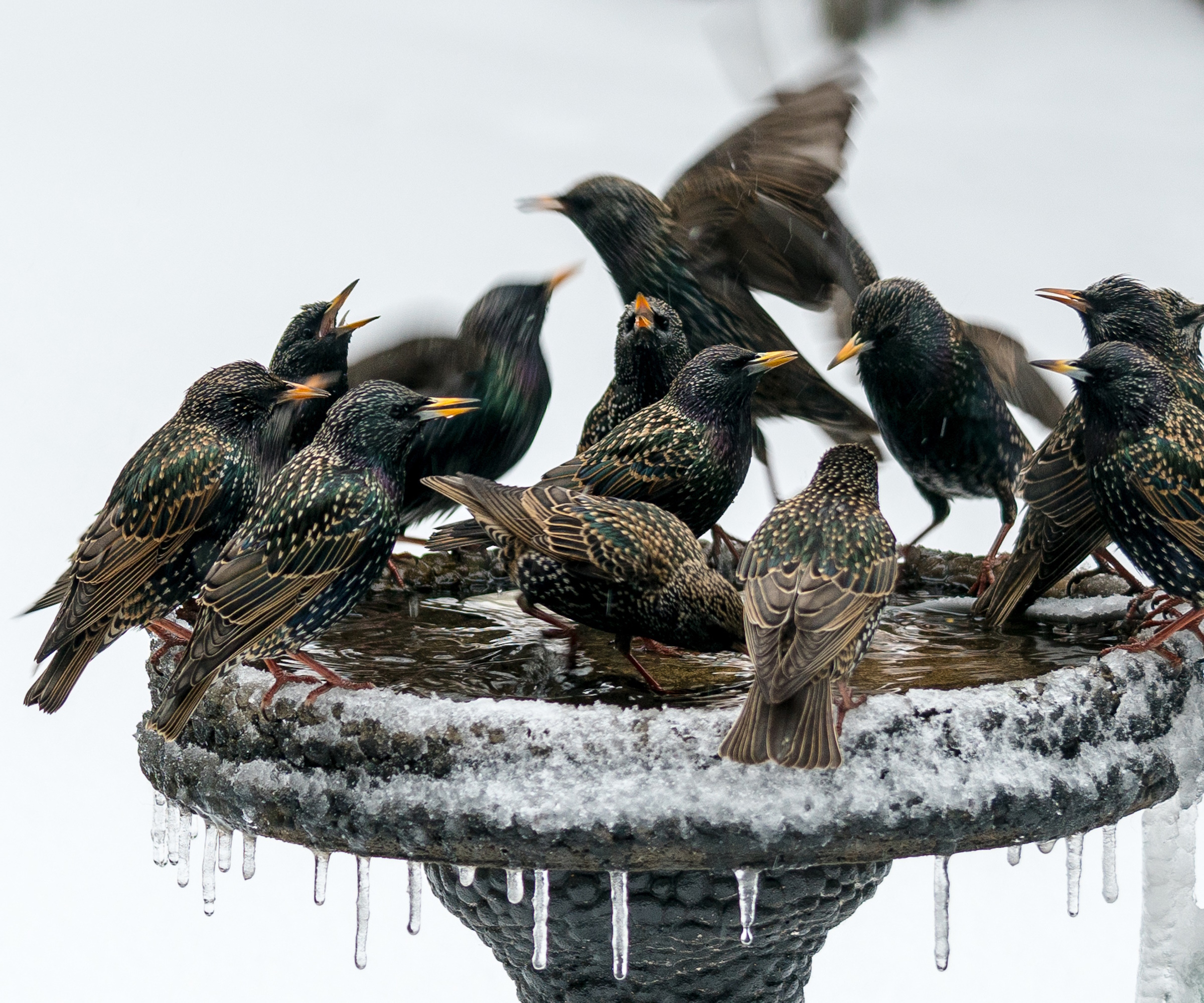
A frozen or ice-covered bird bath is no good for attracting birds to your garden in winter. The easiest solution here to stop a bird bath from freezing in winter is to add a little bit of hot water to the bath each morning, so that the ice melts. It's important not to use boiling water, or to add in too much, or you can run the risk of shattering the bowl of the bird bath.
If you live in an area where temperatures dip below 40˚F, Katie and Krystol suggest placing a heater in the basin of your bird bath. A simple electric or solar bird bath heater like this one from Amazon will keep your water from freezing in cold weather.
You can also place a small plastic ping-pong ball in the water, as the movement will act as an 'ice breaker' and help stop the water from freezing.
Top tip: One mistake to avoid is using salt to de-ice a bird bath. Salt is toxic for birds so should never be used in a bird bath or on a bird table.
3. Use a black liner in your bird bath
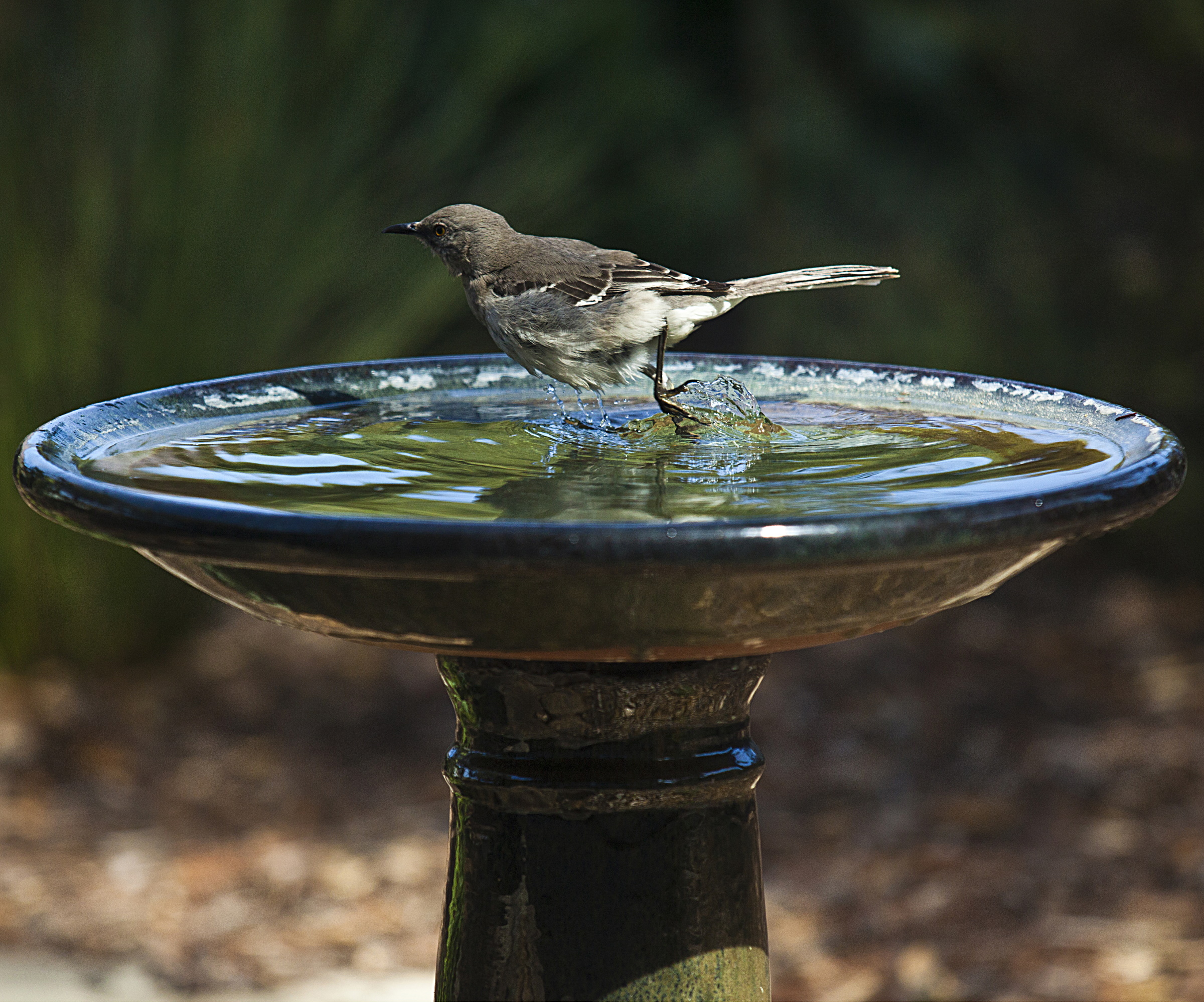
Other methods to keep water from reaching freezing temperatures include making the inside of your bird bath bowl black.
'If you have sunshine during the day a black or dark colored bowl will absorb and retain heat better,' says Isabelle Manseau, founder of Birdzy. 'Even a few degrees can help delay freezing, ideally alongside some shelter from the wind,' she explains.
Using this black bird bath liner dish from Amazon or even some black rocks will work just as well as a dark bowl.

Isabelle is a bird-lover and the founder of Birdzy. She finds peace in feeding garden birds and designs unique bird feeding products. Isabelle offers advice on caring for garden birds.
4. Keep your bird bath clean
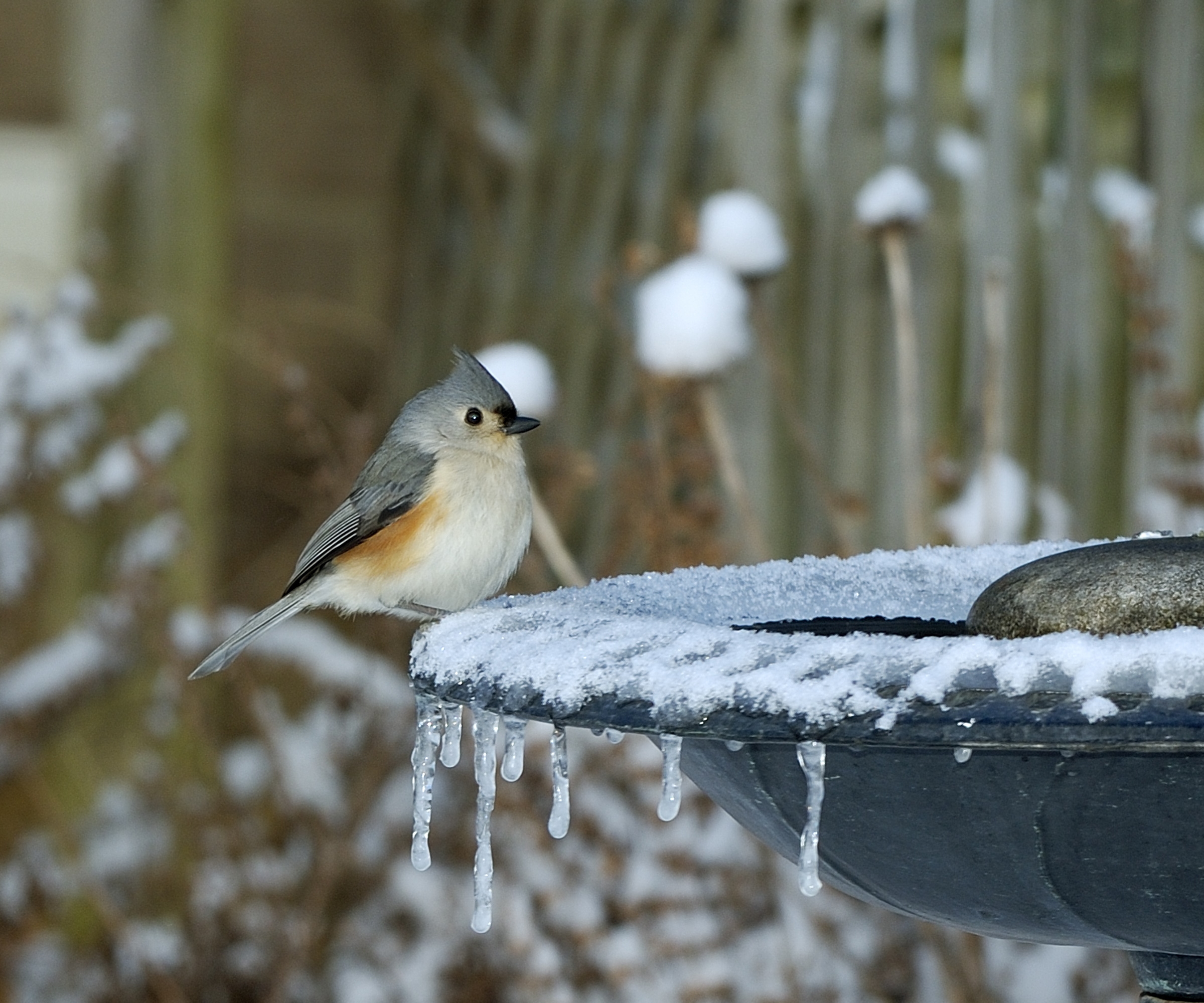
Just because the weather is colder, doesn't mean that algae and bacteria can't still flourish in your bird bath's water.
It’s essential to keep bird baths clean, as stagnant water left out will not only cause a build-up of algae and become unsightly, but it can make birds ill, too. Not doing so would be a bird bath mistake.
It’s also a place used by multiple birds, so there’s a risk of infections being passed on if the site isn’t kept clean.
Katie and Krystol suggest the following cleaning technique be conducted weekly:
- Remove all debris, dirt and droppings.
- Scrub gently to remove algae and other stuck-on material.
- Use a solution of one part chlorine bleach to 10 parts water to completely saturate the bath.
- Rinse with clean water to ensure all bleach has been washed off.
- Dry thoroughly before refilling the bath.
5. Refresh the water regularly
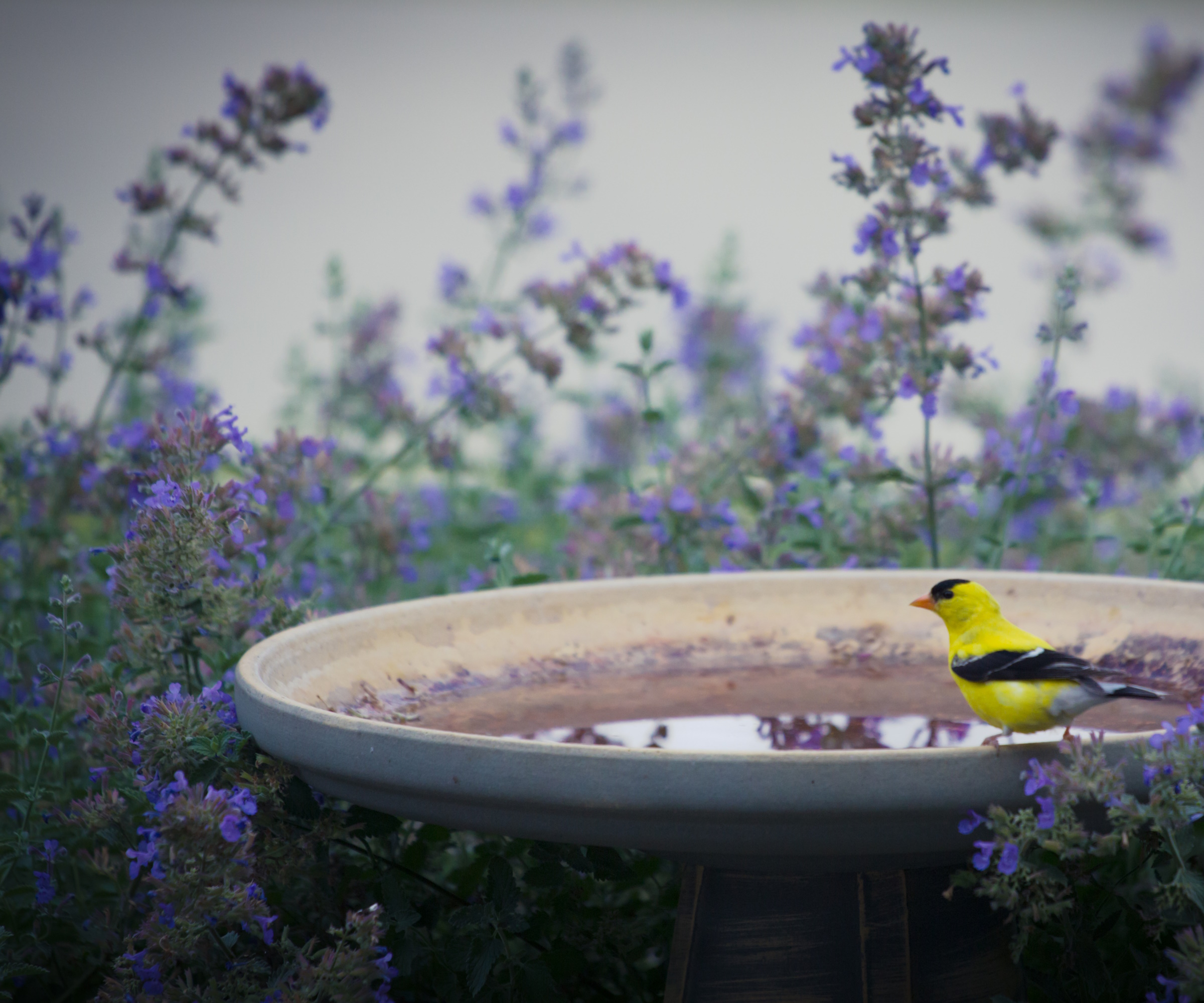
Aside from washing the bird bath, the water itself also needs to be kept fresh. This is easily done by changing out the water daily.
New water in the bird bath should be shallow enough to allow birds to stand in the middle of it.
When making a bird bath, you should consider the depth at which you make it for this reason. The water level should be roughly 2-3 inches deep.
6. Keep the bird bath in a sensible location

Moving your bird bath to an area that receives some sunshine in the winter garden will help reduce the risk of the water freezing.
That said, it's still important to guard against predators. Birds get preoccupied with bathing and preening, making them vulnerable to attack, so where you site your bath is vital.
You can help them to feel safe by giving them clear visibility around the bath, and some nearby cover to perch and preen out of sight.
Top tip: Don't forget to feed birds in winter, too. Putting a feeder near your bird bath will keep them returning to your yard.
7. Provide an alternative water source
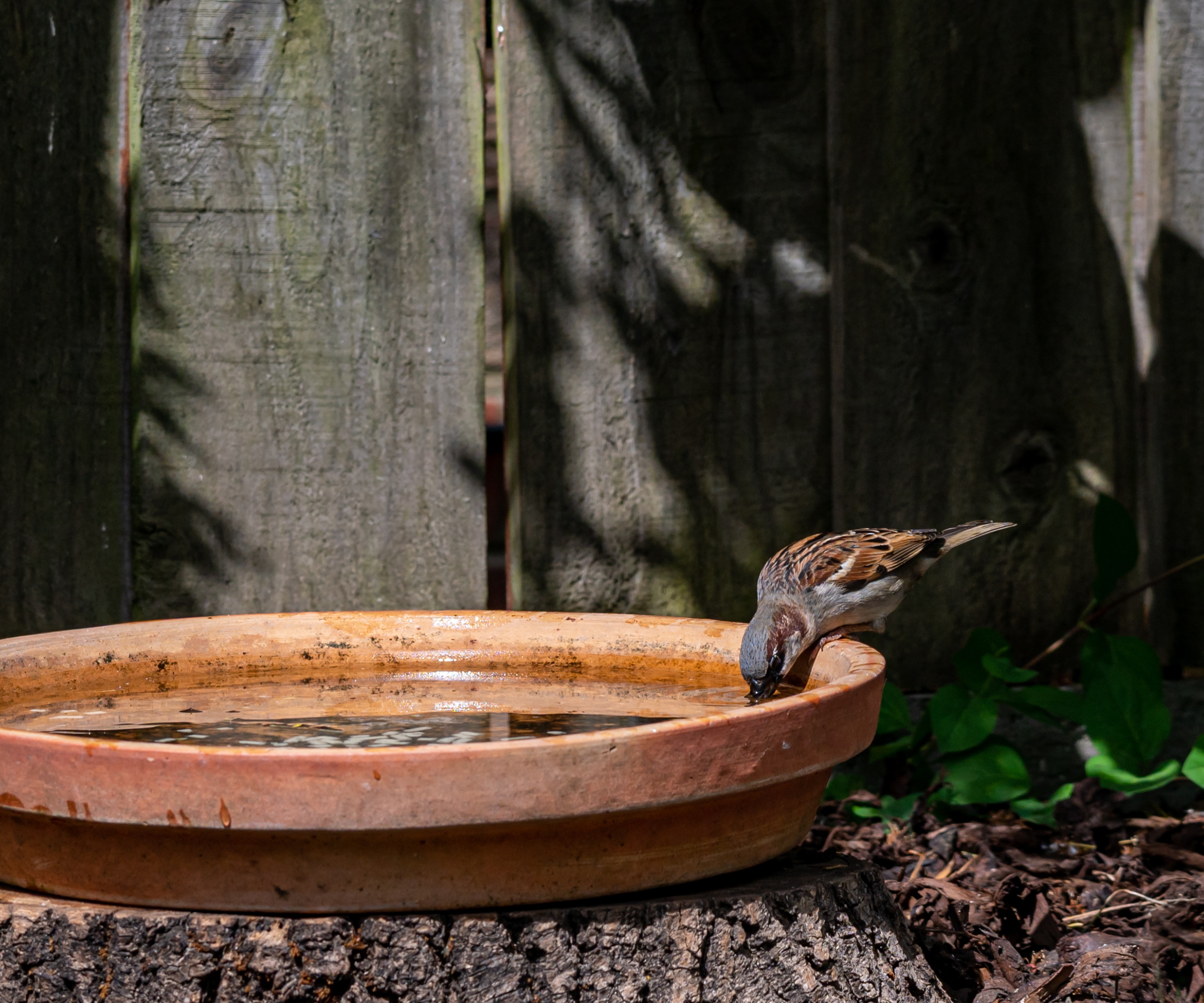
This is a good option if you prefer cover your bird bath for winter. By providing an alternative water source, you can protect your bird bath from harsh weather and ensure you're still helping the birds that visit your yard.
It can be as simple as putting out a fresh bowl of water each day and keeping an eye on it to ensure it isn't freezing over.
You can take this one step further by placing your bowl near plants for birds to optimise the resources you provide them during the winter season.
Shop these stylish bird baths
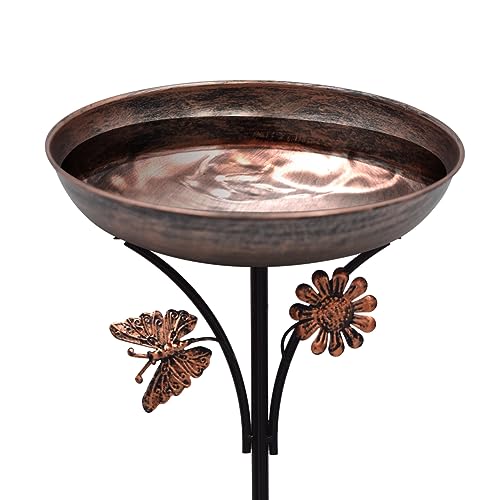
This bird bath design is brushed with an anti-rust color layer to ensure the product will not rust. We like the butterfly and flower design on the pedestal.
FAQs
What is the best material for a bird bath?
Consider a durable material such as copper or iron, which will be resistant to severely cold temperatures and heavy rain. Stone or ceramic bird baths may be more susceptible to frosts, and could crack or break over winter if not protected properly.
Should I bring my bird bath inside over winter?
Ideally, it is best for your feathered garden friends not to bring your bird bath inside over winter, as birds rely on them as a source of water in the colder months. If you choose a design made from durable metals, or one with a protective coating, and ensure you remove any ice that forms on the top, it will be fine to leave outside.
If you love to welcome birds into your yard, there are lots of other things you can do alongside having a bird bath. Try creating a natural bird feeder and consider planting some large trees - this can help attract woodpeckers and even owls.
Sign up to the Homes & Gardens newsletter
Design expertise in your inbox – from inspiring decorating ideas and beautiful celebrity homes to practical gardening advice and shopping round-ups.

Freelance writer and author Flora Baker is a keen amateur gardener and houseplant enthusiast. Her small garden in South London is a constant work in progress as she gets to grips with snail prevention, DIY trellises and what to plant in shady spots overrun with ivy.
- Tenielle JordisonNews Writer (Gardens)
-
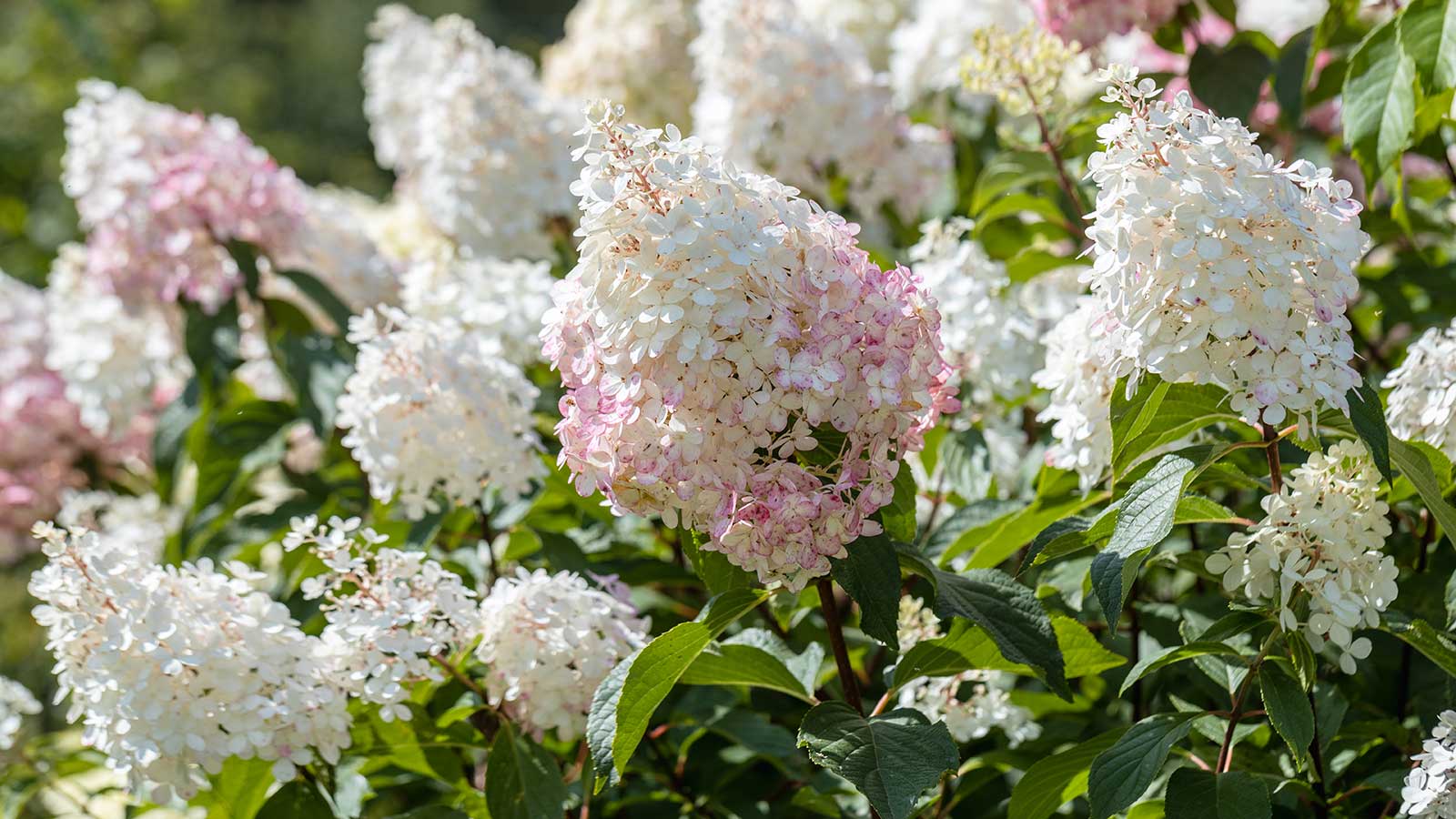 5 hydrangea myths debunked by experts – and what you need to know instead for beautiful blooms
5 hydrangea myths debunked by experts – and what you need to know instead for beautiful bloomsFrom ways to change their color to when to prune, there are certain misconceptions to steer clear of when growing these flowering shrubs
By Holly Crossley Published
-
 How the 'ODT' method can help you to tackle your overwhelming decluttering checklist – and streamline the process from start to finish
How the 'ODT' method can help you to tackle your overwhelming decluttering checklist – and streamline the process from start to finishAvoid 'analysis paralysis' and tick off tasks quickly and easily by making just one decision at a time
By Ottilie Blackhall Published
-
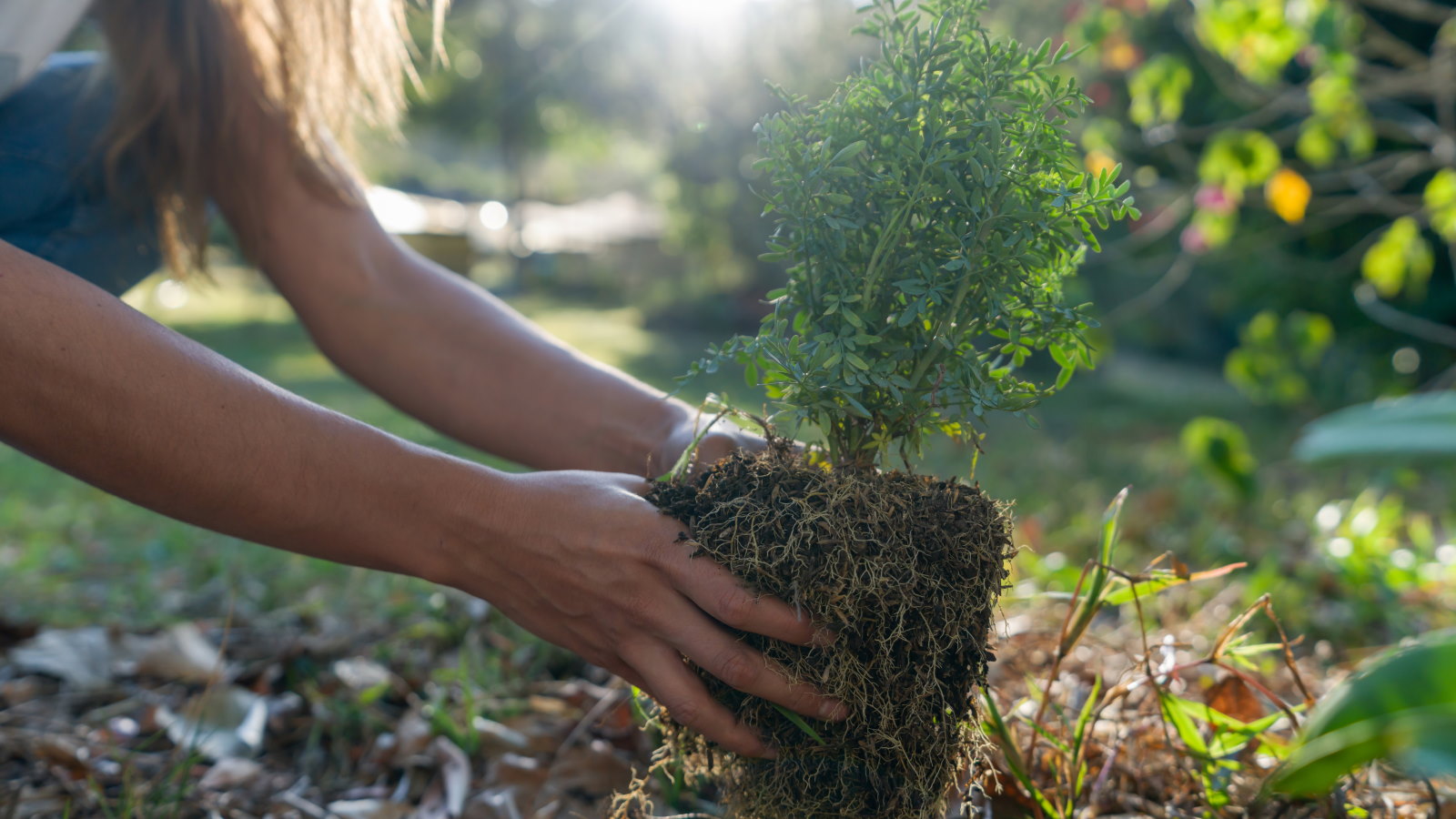 7 shrubs to plant in April to transform beds and borders – including native plants and bushes suitable for dry or wet spots
7 shrubs to plant in April to transform beds and borders – including native plants and bushes suitable for dry or wet spotsThese shrubs can bring flowers, texture, and fragrance, as well as attracting beneficial insects and birds
By Drew Swainston Published
-
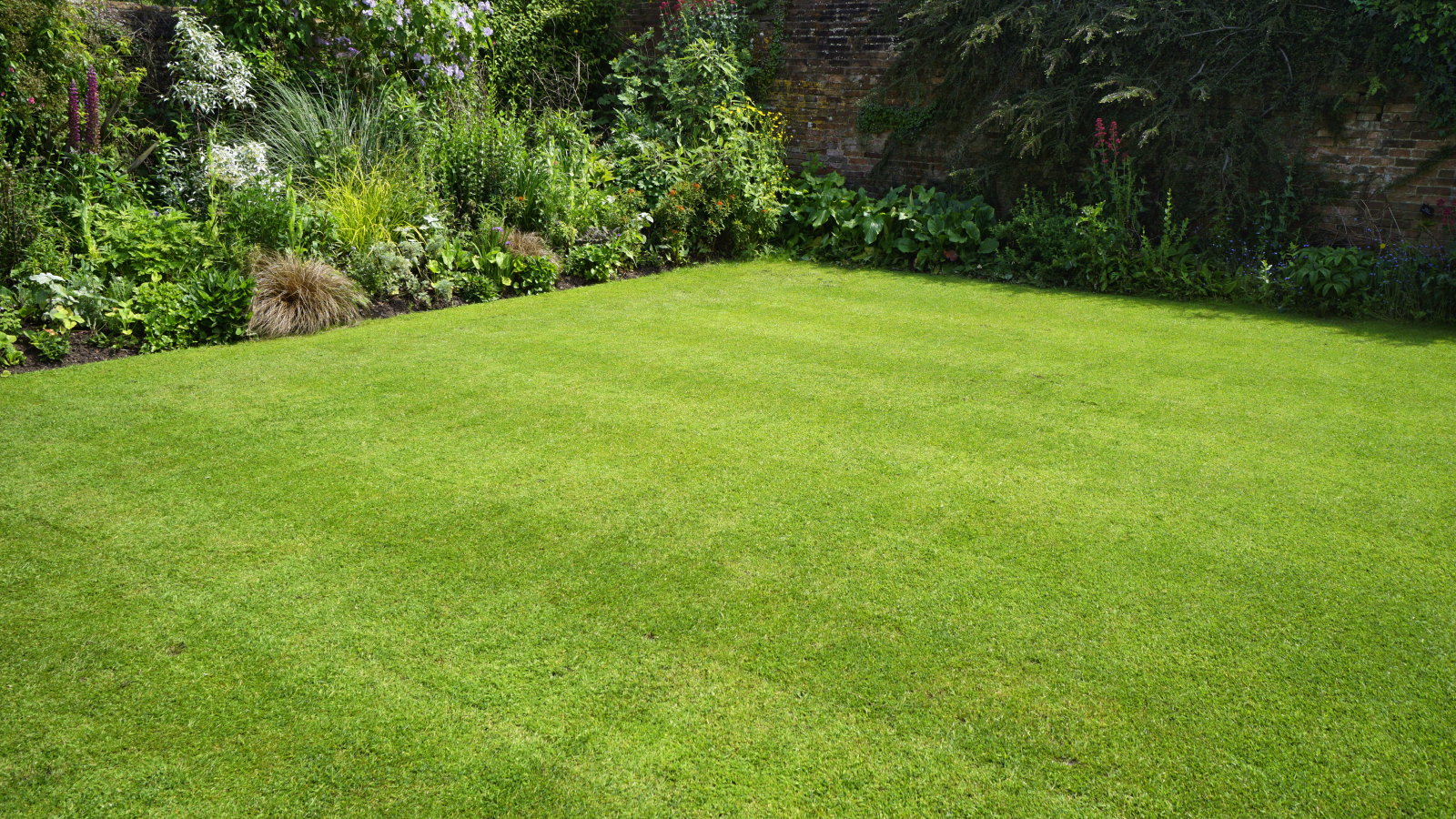 I'm a lawn care expert, and always do these 7 jobs in April to ensure thick, green grass all summer long
I'm a lawn care expert, and always do these 7 jobs in April to ensure thick, green grass all summer longTransform your lawn with these simple yet highly effective April lawn care tasks
By Drew Swainston Published
-
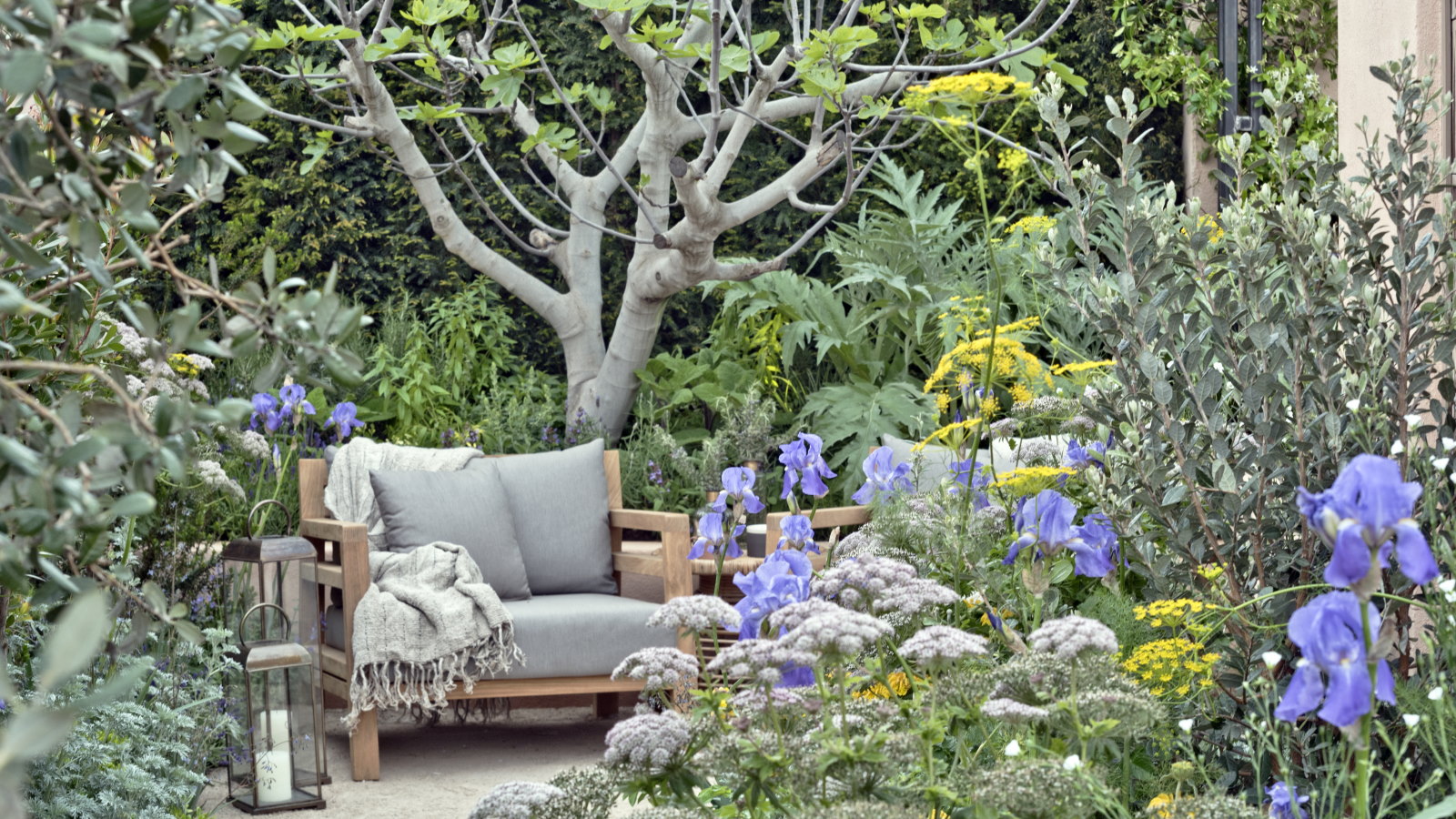 Horticulturists urge you to prune these 7 plants in April – for healthy growth and better-than-ever flowering displays
Horticulturists urge you to prune these 7 plants in April – for healthy growth and better-than-ever flowering displaysDiscover a key selection of plants to cut back this month, with expert pruning advice
By Drew Swainston Published
-
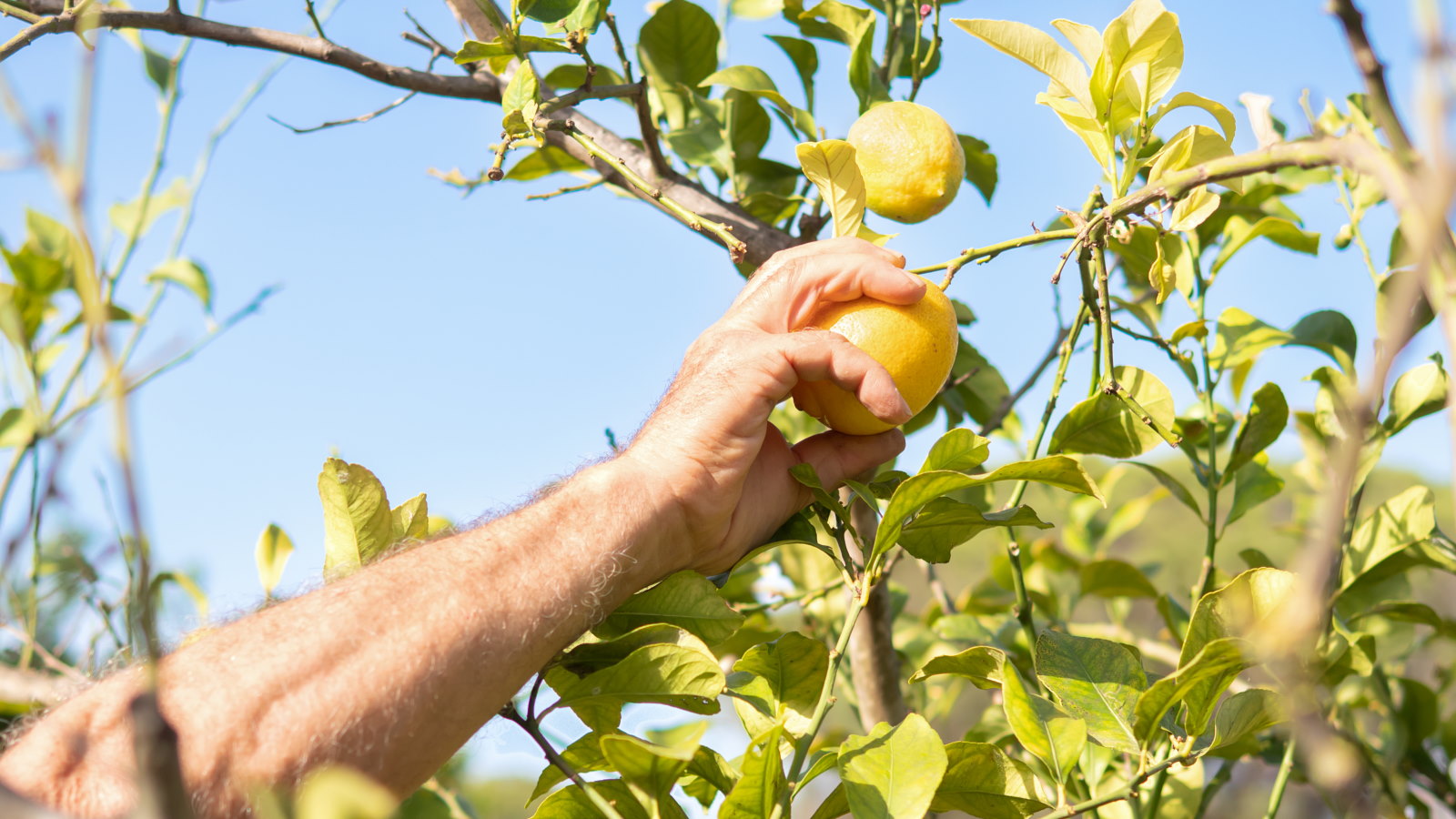 7 fruits to plant in April for years of tasty homegrown harvests, plus expert planting tips
7 fruits to plant in April for years of tasty homegrown harvests, plus expert planting tipsAn exceptional selection of fruit trees and soft fruit can be planted this month
By Drew Swainston Published
-
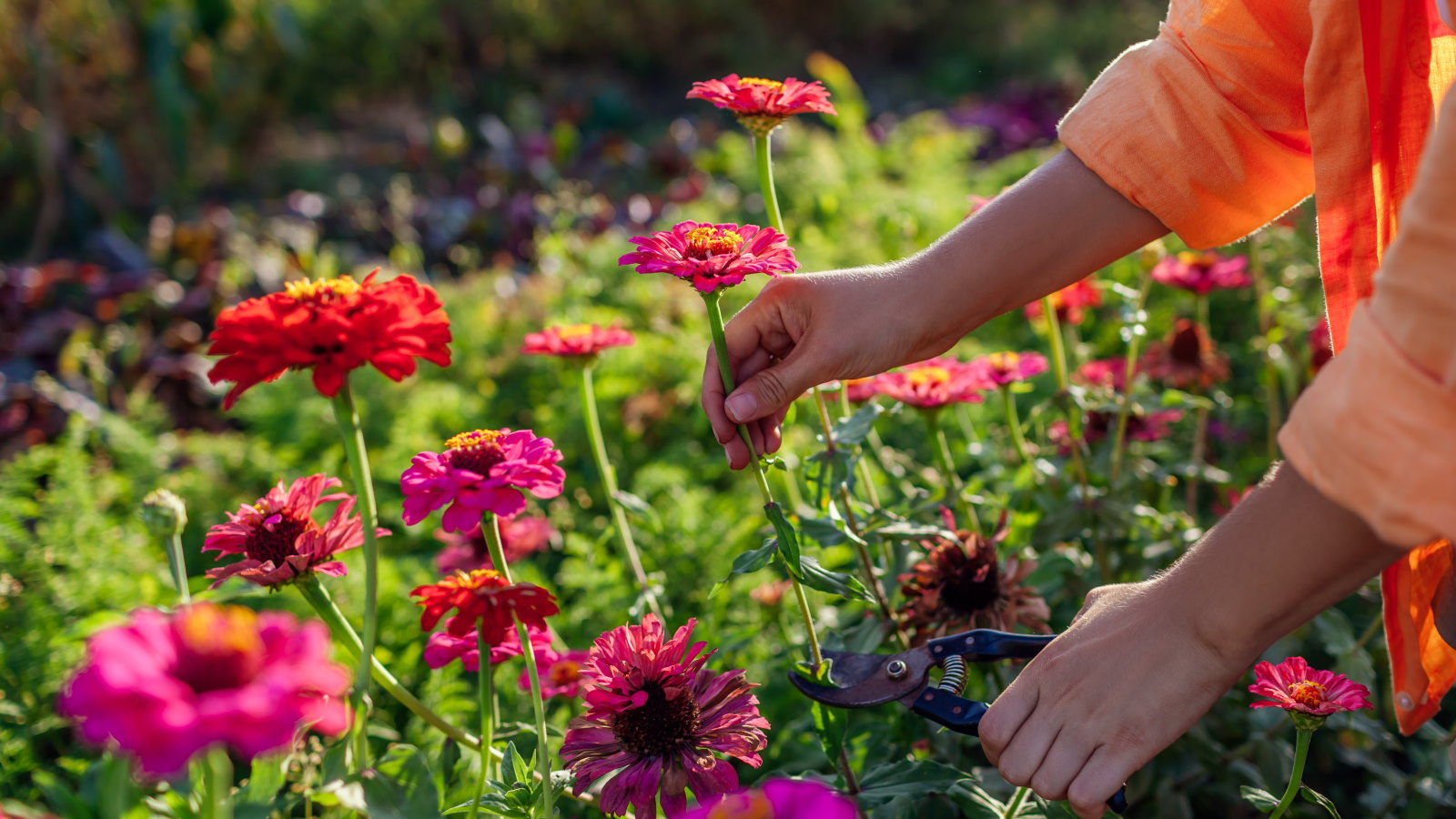 7 dazzling cut flowers to plant in April for bountiful blooms to enjoy in bouquets, vases, and displays this summer
7 dazzling cut flowers to plant in April for bountiful blooms to enjoy in bouquets, vases, and displays this summerDiscover sowing tips from an expert horticulturist
By Drew Swainston Published
-
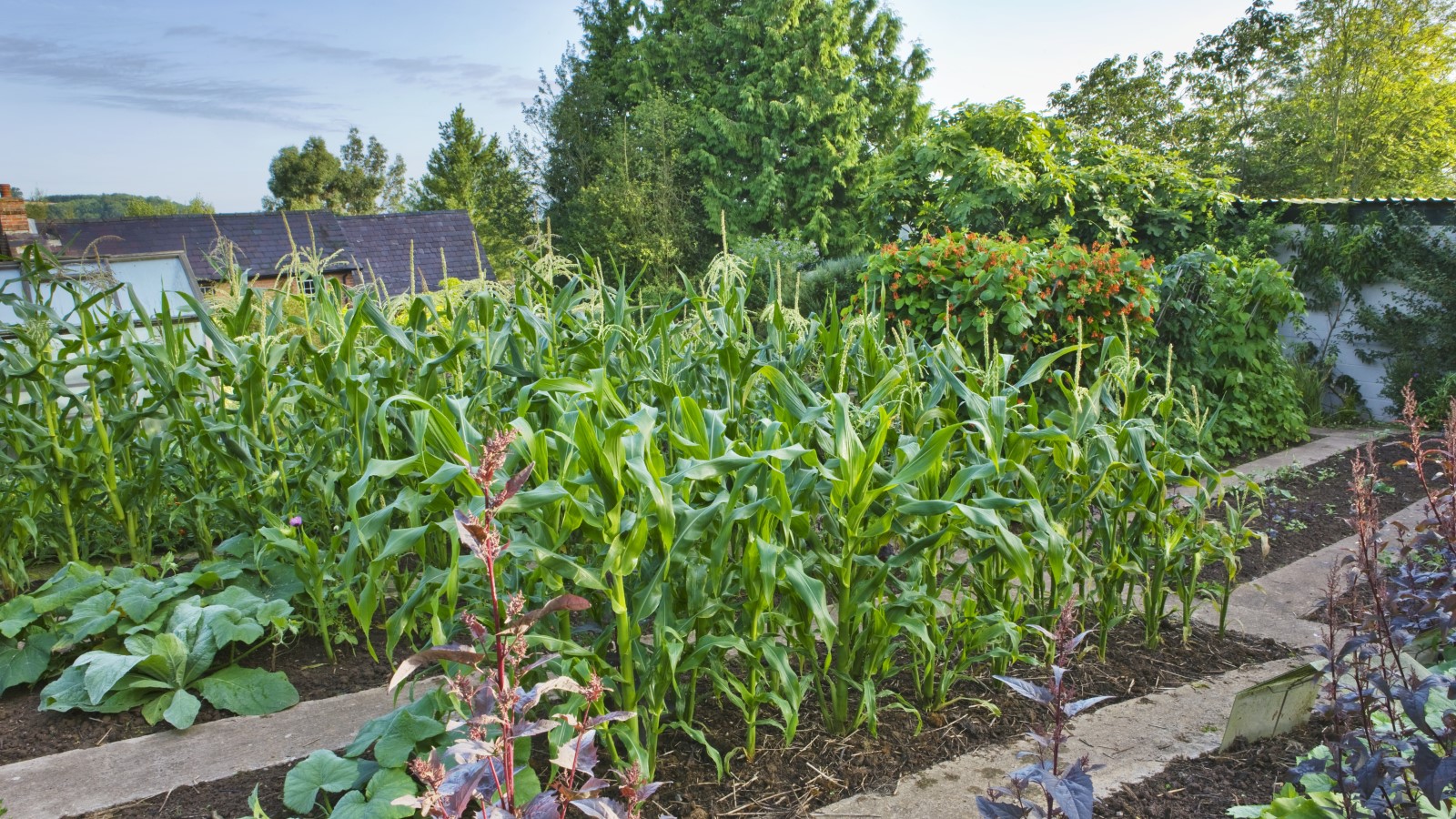 7 of the best vegetables to plant in April, with sowing tips from an experienced grower for bumper harvests
7 of the best vegetables to plant in April, with sowing tips from an experienced grower for bumper harvestsFrom broccoli to zucchini, April is a fantastic time to plant a wide range of vegetables
By Drew Swainston Published
-
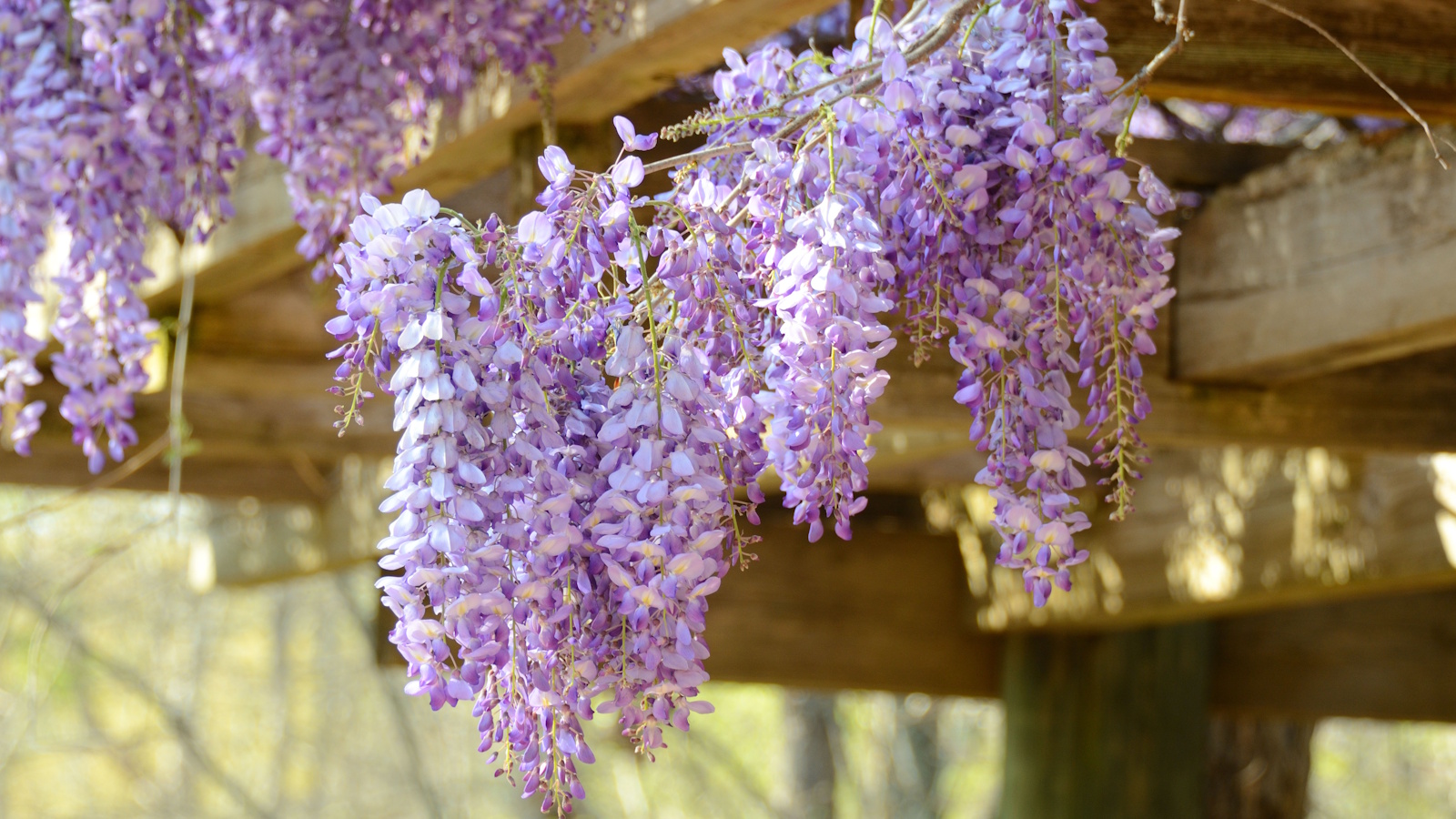 Best fragrant spring-flowering perennials – 5 charming choices to infuse delightful scent in your yard this season
Best fragrant spring-flowering perennials – 5 charming choices to infuse delightful scent in your yard this seasonSpring is full of so many beautiful aromas, uplifting our yards and making them an even more pleasant place to be
By Tenielle Jordison Published
-
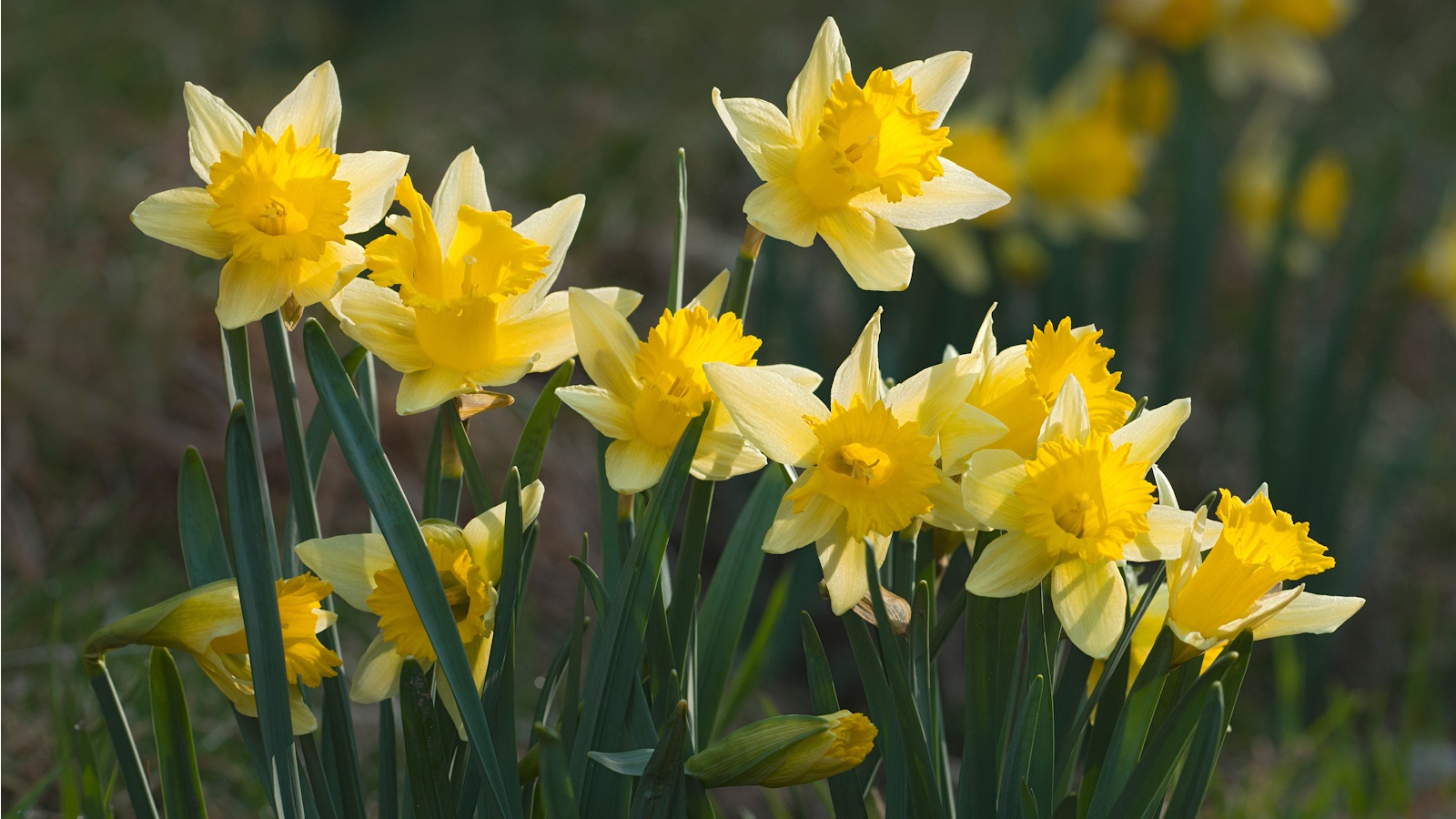 Is it too late to plant daffodil bulbs in March? Expert advice on making late planting a success
Is it too late to plant daffodil bulbs in March? Expert advice on making late planting a successThese stars of spring should be planted in fall, but that doesn't necessarily mean you've missed your opportunity once spring comes around
By Tenielle Jordison Published
